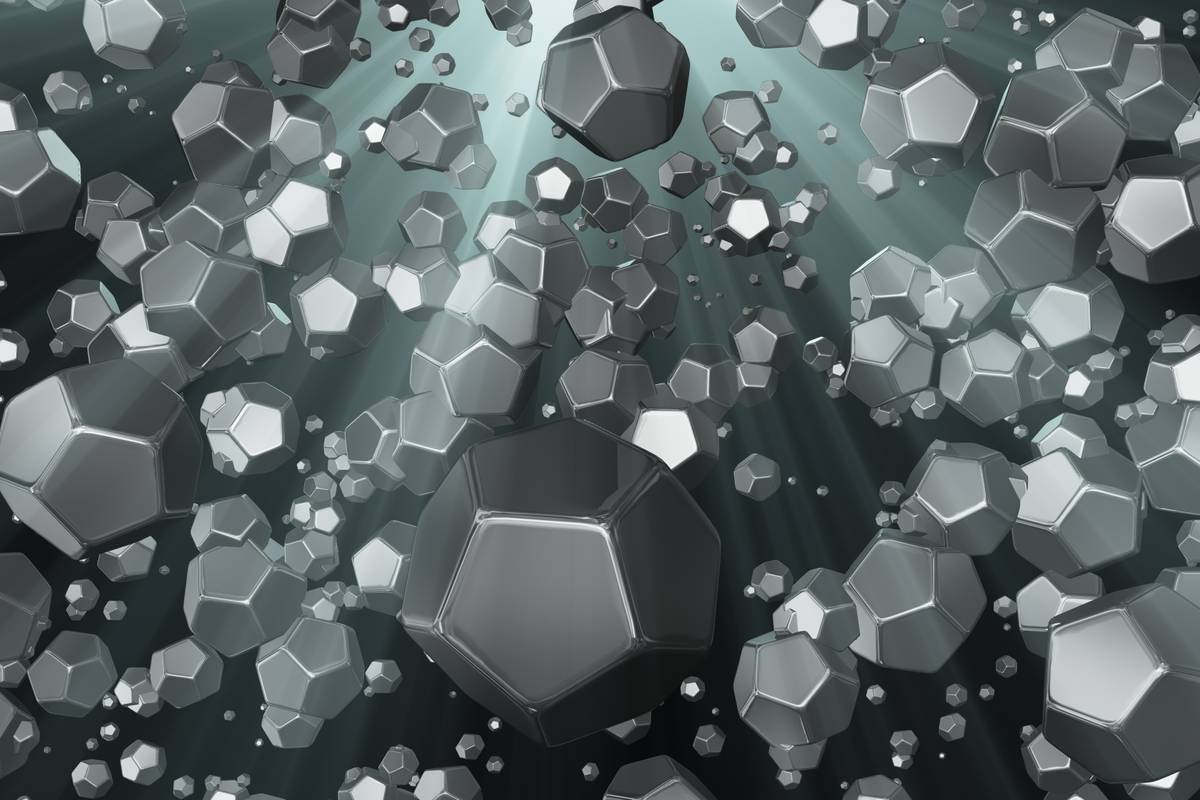Graphene Balls and Electrochemical Devices Based on these Materials
Graphene-coated nanoparticles with a range of applications in electrical engineering

Background
The unique electronic, mechanical and thermal properties of graphene make graphene coated inorganic nanoparticles very promising materials for the future. These hybrid nanoparticles can be used in sensors, as fuel cell catalysts, in photovoltaics and optoelectronics, and also as material for high performance battery electrodes.
For example Freddy Kleitz and Claudio Gerbaldi [1] recently described graphene-wrapped mesoporous Cu-Ni oxides that exhibit unprecedented electrochemical behavior, such as high reversible specific capacity, excellent coulombic efficiency and long-term stability at high current density.
In November 2017 a press release of Samsung [2] reported on so called “graphene balls”, a breakthrough battery material that enables a 45% increase in capacity, and five times faster charging speeds than standard lithium-ion batteries. The corresponding Nature Communications publication [3] describes the “graphene balls” as silicon oxide nanoparticles with a coating of graphene. In January 2018 Samsung SDI highlighted these “graphene balls” as a new, high performance battery material during the Detroit Motor Show [4].
Thus it is predictable that graphene coated nanoparticles will be used for introducing high performance batteries into the market.
Technology Overview
Researchers from Max-Planck-Institute for Polymer Research in collaboration with BASF fabricated graphene-encapsulated Co3O4 nanoparticles by co-assembly between negatively charged graphene oxide and positively charged metal oxide nanoparticles [5].
When used in battery electrodes, the unique hybrid architecture exhibits different features such as suppression of aggregation of oxide nanoparticles, accommodation of volume change during the cycle process, leading to a rise to a high oxide content in the composite and maintenance of a high electrical conductivity of the overall electrode.
These results confirm that the proposed technology enables a good encapsulation of electrochemically active metal oxide nanoparticles by graphene sheets and results in materials with a remarkable lithium storage performance with high reversible capacity and excellent cycle performance.
These hybrid nanoparticles were patented with broadly granted substance claims in US, EP, JP, KR, CN and TW.
Granted US8611070 claims:
- Claim 1: Nanoparticles comprising at least one component A selected from the group consisting of a metal, a semimetal, and metal compound and a semimetal compound; and at least one coating of graphene.
- Claim 15: An electrochemical cell or a supercapacitor, comprising the nanoparticles according to claim 1.
Even though a third party opposed against the granting of the EP and JP patents, these patents were granted with broad substance claims.
Further Details
- L. L. Perreault et al: “Spray-Dried Mesoporous Mixed Cu-Ni Oxide@Graphene Nanocomposite Microspheres for High Power and Durable Li-Ion Battery Anodes”, Adv. Energy Mater. 2018, 8, 1802438
- https://news.samsung.com/global/samsung-develops-battery-material-with-5x-faster-charging-speed
- In Hyuk Son et al: “Graphene balls for lithium rechargeable batteries with fast charging and high volumetric energy densities”, NATURE COMMUNICATIONS | 8: 1561
- http://www.samsungsdi.com/sdi-news/1803.html
- K. Müllen, X. Feng, S. Ivanovici, S. Yang: “Fabrication of Graphene-Encapsulated Oxide Nanoparticles: Towards High-Performance Anode Materials for Lithium Storage.”, Angew. Chem. Int. Ed. 2010, 49, 8408–8411. Highly cited paper with > 750 citations (source: web of science)
Applications
- High performance batteries
- Fuel cell catalysts
- Sensors
- Photovoltaics
- Optoelectronics
Opportunity
The BASF shares in the patent portfolio were completely transferred to Max-Planck-Society, so that Max-Planck-Society are the only assignee owning the patents which enables them to grant an exclusive worldwide patent license.